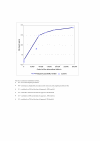Generalized cost-effectiveness analysis for national-level priority-setting in the health sector
- PMID: 14687420
- PMCID: PMC320499
- DOI: 10.1186/1478-7547-1-8
Generalized cost-effectiveness analysis for national-level priority-setting in the health sector
Abstract
Cost-effectiveness analysis (CEA) is potentially an important aid to public health decision-making but, with some notable exceptions, its use and impact at the level of individual countries is limited. A number of potential reasons may account for this, among them technical shortcomings associated with the generation of current economic evidence, political expediency, social preferences and systemic barriers to implementation. As a form of sectoral CEA, Generalized CEA sets out to overcome a number of these barriers to the appropriate use of cost-effectiveness information at the regional and country level. Its application via WHO-CHOICE provides a new economic evidence base, as well as underlying methodological developments, concerning the cost-effectiveness of a range of health interventions for leading causes of, and risk factors for, disease.The estimated sub-regional costs and effects of different interventions provided by WHO-CHOICE can readily be tailored to the specific context of individual countries, for example by adjustment to the quantity and unit prices of intervention inputs (costs) or the coverage, efficacy and adherence rates of interventions (effectiveness). The potential usefulness of this information for health policy and planning is in assessing if current intervention strategies represent an efficient use of scarce resources, and which of the potential additional interventions that are not yet implemented, or not implemented fully, should be given priority on the grounds of cost-effectiveness.Health policy-makers and programme managers can use results from WHO-CHOICE as a valuable input into the planning and prioritization of services at national level, as well as a starting point for additional analyses of the trade-off between the efficiency of interventions in producing health and their impact on other key outcomes such as reducing inequalities and improving the health of the poor.
Figures




References
-
- Jamison DT, Mosley WH, Measham AR, Bobadilla JL. Disease control priorities in developing countries. New York, Oxford University Press. 1993.
LinkOut - more resources
Full Text Sources
Research Materials

